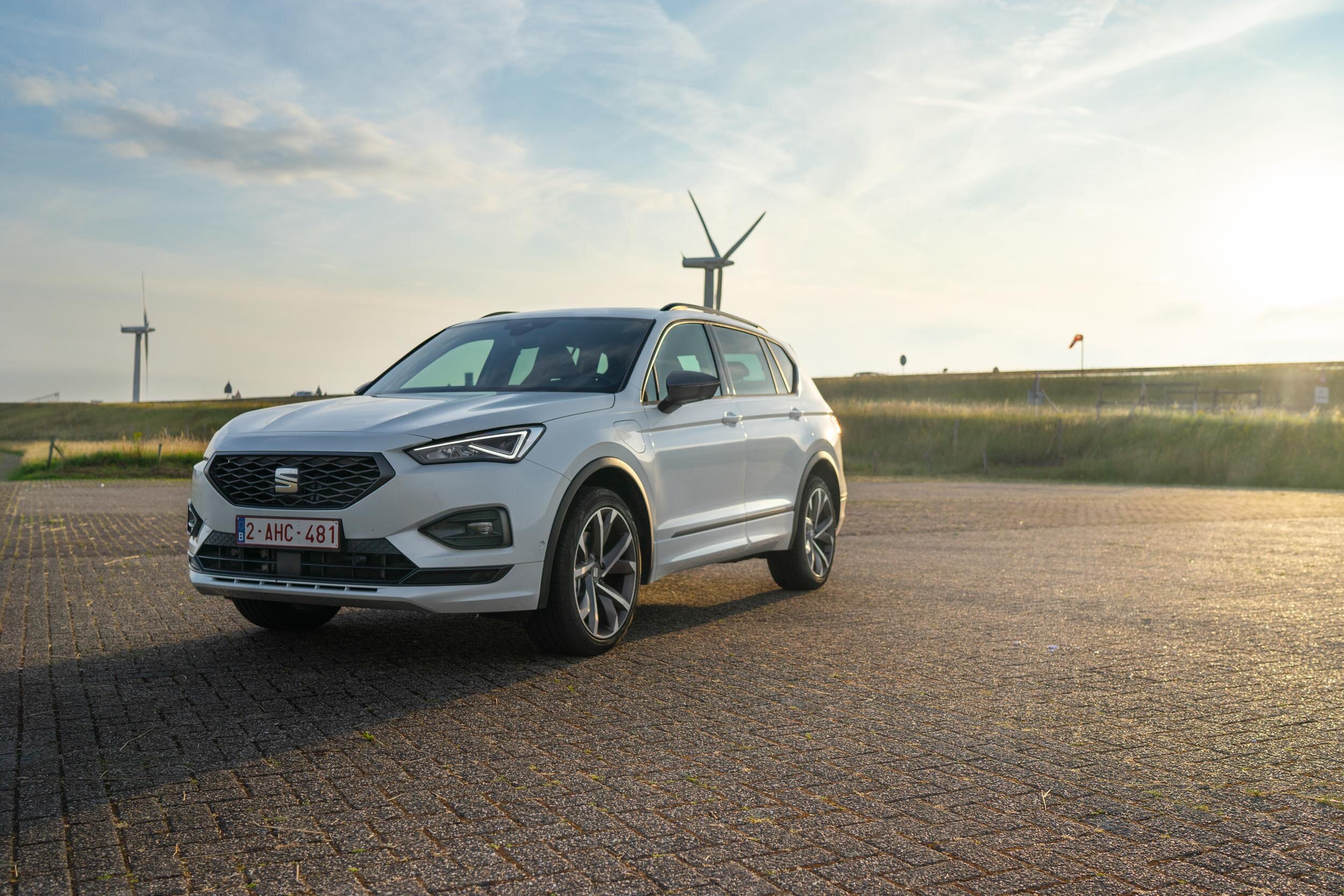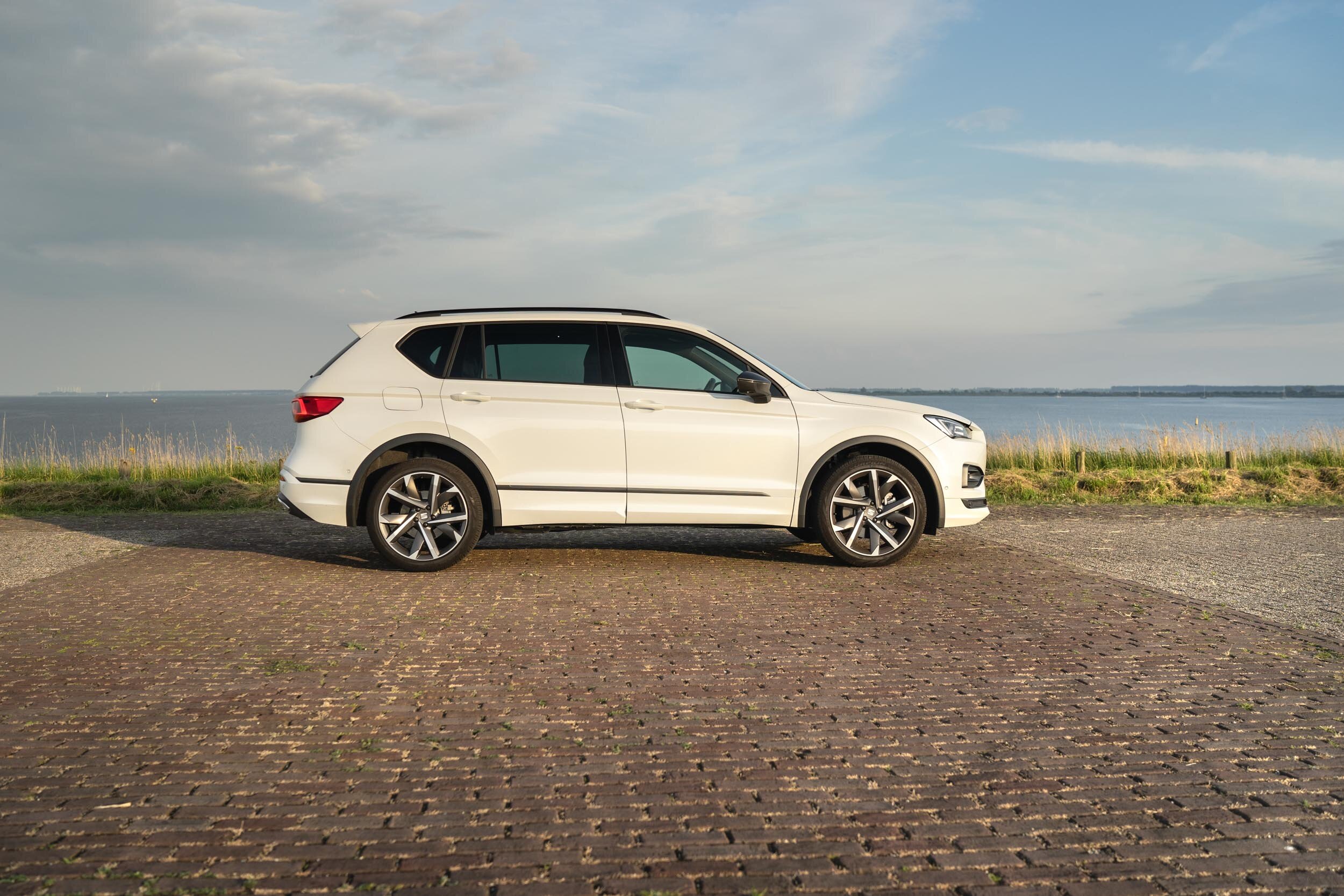Tarraco FR PHEV Tested | Biggest Plug-in Bargain?
Beefy looks, spacious interior, and a drivetrain that combines eco-friendly driving with dynamic properties, that mixture is in high demand. So when SEAT came to stage with the Tarraco FR PHEV, they undoubtedly knew it was possibly launching their best Tarraco to date. So did they? Is this the best Tarraco version?
This isn't the first SEAT Tarraco we tested over at Car Journalism, we've driven the 190 Hp 4Drive DSG in FR trim. So if you're here for an insight into the Tarraco as a whole, I kindly request you to start with that article (link here) before continuing. For this review SEAT Belgium gave me more than a week with the Tarraco FR PHEV, which is a Tarraco with a (VW) GTE drivetrain. There's a downside I'll have to tell you about from the start: it doesn't come as a 7-seater in the PHEV shape. Why? The battery didn't leave space for the legs of the rear passengers.
When it comes to the volume brands of the VW-Group, SEAT is frequently the last to get a pick at new technologies. That might not give them a head start but it does open up other doors. Doors left unopened by other brands, say Volkswagen and Skoda. Where Volkswagen offers a PHEV drivetrain in the Tiguan, the Tiguan all-space doesn't have a battery-assisted version. Skoda doesn't offer a Kodiaq PHEV either. So here's SEAT with their spacious Tarraco ready to conquer markets that tax their cars on CO2 emissions, a good move if you ask me.
Spanish GTE
Not many years ago hybrids and PHEVs were rare and futuristic machines. Today the world's a different place with the majority of brands offering more and more battery-assisted forms of transport. The Volkswagen Golf GTE was one of the first to be more dynamic as a PHEV, familiarising the masses with this concept while at it. You'll undoubtedly be familiar with that drivetrain too and now imagine putting it in the Tarraco. Before we get to the more entertaining part, ill run you through some facts. It's the same 1.4 petrol engine combined with an electric engine that combines to an output of 245 HP and 400 Nm. All that power goes solely to the front wheels and makes 0-100 KPH possible in 7.4 seconds (confirmed and tested by yours truly). It may be friendly to the climate (42g/km) but the earth's crust has to carry near 300 kilograms more compared to the Tarraco with a 1.5 TSI drivetrain. There's just a DSG, no manual on the list.
The frontal surface on the SEAT Tarraco is a lot more than on the VW Golf, so I was surprised to reach the claimed electric range of 47 kilometers with ease. Although the 13 kWh battery and its range aren't leading the pack (Mercedes-Benz's CLA PHEV does 70 km), it did make 13 of the 15 trips I did fully electric. Just don't expect it to reach 47 kilometers on the highway. High-way consumption at 120 KPH came in at 6.6L/100 Km, a lot better than 10 liters of the 190PS 2.0 TSI 4Drive DSG. Charging the Tarraco PHEV happens in 3.5 hours with a 3.6 kW DC charger, or 6 via a regular plug. That meant a full charge when I only spend the morning at the office. And this car being the embodiment of a family car, you'll be pleased to hear it can tow up to 1700 kilograms (assisted). That means you can take your mother-in-law with you, albeit on a trailer.
Tarraco GTE = Tarraco GTI?
I wasn't sure about the previous drivetrain I tested in the Tarraco and I was hoping the PHEV would be the sweet spot. And in 9/10 things it is the best option, I'll get there in a bit, but it would have been perfect with 4Drive. All the power unleashed on just two wheels, ones that do the steering too, is too much. Often it had to cut power to keep traction, often it spun its wheels when ESC was in Sport. Wait...wheel spin!? SEAT hasn't programmed the Sport setting in a way that ESC switches to Sport, that's hidden (hard to reach quickly) in the setting menu. But after I found that, I had a hard time keeping myself from generating wheel spin in every corner. Imagine a near 1800 kilograms, 4.7-meter long family carrier crawling out of the apex with screaming front wheels...you get it!? The SEAT Tarraco FR PHEV is a Golf GTE turned big!!! If the 1.4-liter engine would have sounded better, it would be a very addictive whole. Morally debatable, but still. SEAT'S DCC, their name for chassis response controlling technology, managed to hide the Tarraco FR's weight well in corners. Relatively little body roll happens, not when accelerating and not when changing direction. Understeer doesn't happen all too quickly due to 255 wide tires upfront. It adds up to a neutral and predictable whole, despite the 1800 kilograms.
So why is it the best drivetrain for the Tarraco? The torque-rich mixture the PHEV drivetrain gives is exactly what the Tarraco needs. Where the petrol drivetrains had to crawl high into the revs, the electric engine tosses in the torque at the right time. Often acceleration will be done solely on the electric engine, giving it a silent and comfortable push. When the car switches the petrol engine on or off, you will barely notice it (Volvo, pay attention please).
Two Sides
To emphasize and to provoke you into using all the car's potential, SEAT has created a button that says "S Boost." It puts the drivetrain into not its most effective mode but its most performance-orientated setting. It overrules whichever setting (ECO, Road, Sport, Off-Road) you're currently in, so in essence, it's a very cool button to use. One you want to reach quickly, but sadly it is positioned in a way that it isn't easy to reach. Resulting in that I rather put the car in Sport than in that setting, rotating the mode selector simply works better. But when you want to misbehave, put it in S Boost and turn ESC off. You'll tire supplier will thank me for this tip.
Below that beforementioned button is a button that says "E-Drive" and that allows you to switch from electric (the standard way the car starts) to hybrid. When you press it, the 9.2-inch infotainment shows which mode you've selected. You'll be able to do 140 KPH on the electric engine, so short drives on the highway mean you don't have to switch modes. Know you're entering a city again at the end of your drive? Then switch the car to hybrid and above 100 KPH the car switches to petrol. A full battery and full tank can easily get you 700 kilograms of range in one haul.
Almost offering it all
If only the battery didn't kill the third seating row option, if only the electric engine would push the rear wheels. Then what? Then SEAT their ambition to reach 25% PHEV sales would be met even faster. Don't get me wrong, the Tarraco PHEV is a very welcome addition to the line-up but it would have annihilated competition if it had those two things too. For € 52.145 (BE) this Tarraco FR PHEV is a competitively priced PHEV that runs on proven German engineering yet has Mediterranean, sporty appeal to it. Many parents who like a drivetrain that packs a punch will love this car. Many people that just want a big PHEV will love it too. Makes me wonder why I’m testing this and not our daddy-Kenny!??
























